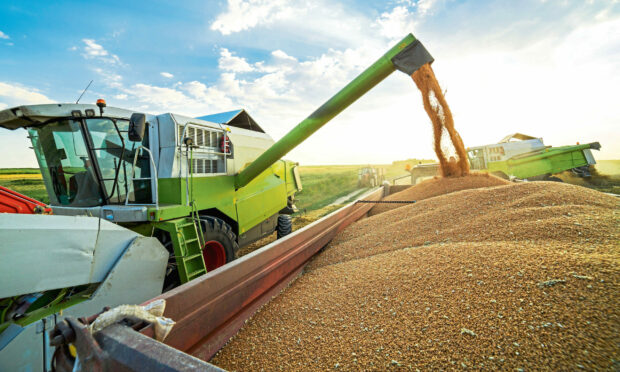Official statistics have confirmed that 2022 was a record year for cereal yields in Scotland.
The prolonged hot and dry conditions in spring and summer also meant a remarkably early finish and low moisture levels.
Scotland’s chief statistician has released figures which show cereal yield is at a 200-year high, rising 14% to 7.6 tonnes per hectare this year.
Above-average yields more than compensated for a small decrease in the overall sown area largely driven by reductions in spring barley and oats.
Production increased by 10% from 2.9 million tonnes in 2021 to 3.1m, and cereal crops are at their highest since 2014.
The sown area of spring barley fell by 5% from 2021, yet high yields resulted in a 17% rise in production.
Oats were the only crop to fall in production, with a 20% decrease in the sown area resulting in a 9% decrease in production.
High yields led to record production
Winter barley, wheat and oilseed rape saw increases in sown area, and, coupled with the best yields in the last 20 years, production for these crops exceeded the 10-year average.
High yield, combined with a 7% increase in sown area, resulted in record production for oilseed rape at 151,000 tonnes.
Meanwhile, the AHDB levy board is asking growers to complete a questionnaire as the first phase of its review of the recommended lists (RL) for cereals and oilseeds.
Jenna Watts, AHDB head of crop health, said: “We need to hear from farmers to help us hone the RL so it continues to fit the complex decision-making needs of modern farming businesses.
“This is a thorough review and will leave no stone unturned. It will cover many aspects, from the type and nature of the trials to the way data is analysed and variety decisions are made. It will also investigate how results reach farmers and ensure that the RL continues to deliver the best value to industry.”
The questionnaire can be accessed on the AHDB website here.
In-depth discussions will also take place at stakeholder meetings and focus groups over winter.

Conversation